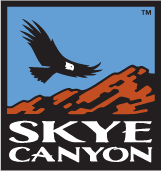How Do HOA’s Work?
When you purchase a home in a planned development such as a master-planned community, gated community or subdivision, you are obligated to join that community’s homeowners association (HOA) and pay its dues. According to the Community Association Institute, more than 68 million Americans live in common-interest communities, half of which are run by HOAs. They are designed to preserve the nature and character of the community by providing services and amenities to residents, protecting property values, and helping to build and sustain communities that people want to call home.
“One of the best ways to look at an HOA is they are just a neighborhood of people who have decided they want their community to have a particular look and feel for years to come,” said Angela Rock Esq., President, Olympia Management Services.
Who runs the HOA?
An HOA consists of members, who are all of the people who own townhomes, houses and other dwellings in the community. Its members vote for a Board of Directors, which establishes bylaws, ratifies the budget, holds regular meetings to get community input, and volunteers its time to help make the community a better place to live. As the population grows, the number of board members may grow with it to help ensure the community has ample representation. It may also have sub-committees to oversee planning, budget, membership, enforcement, events, and other tasks. While some smaller HOAs self-manage, an estimated three-quarters opt for management by a professional association management company, according to HOAManagement.com.
What does an HOA do?
If you have never lived in a community with an HOA, at first blush you may balk at the idea of paying an HOA fee. But when you break down all that an HOA does, it seems a small price to pay for the services they provide when it comes to cleanliness, safety, and quality of life. The specific services provided by an HOA vary by community, but here are some examples:
- Amenities and common area upkeep. One of the reasons people choose to live in a planned community is for the beauty and consistency. HOAs enable communities to add a range of amenities like landscaping and splash pads that go beyond what the local government can provide. The HOA oversees common area maintenance such as hiring and managing landscape companies, scheduling seasonal flower planting, replacing dead trees, or having gate or paver repairs made. It also includes cleaning and repairs for swimming pools, clubhouses, fitness facilities, parks, walking trails and security gates, among other amenities.
- Establish and enforce community bylaws. In addition to maintaining common areas, HOAs set rules that residents must follow. These are called covenants, conditions, and restrictions (CC&Rs). Examples of CC&Rs include whether you can have a satellite dish or basketball hoop on your home if you may park cars on the street and what the fine is for having unsightly weeds or broken down cars on your property. The HOA monitors to be sure each homeowner keeps their property presentable and follows the bylaws. The HOA then sends a letter to the owner in violation requesting that they address the issue. If the homeowner does not comply, they are fined until they fix the problem. While it’s a small nuisance to get a non-compliance letter for weeds or a dead tree, it’s a great perk to have the HOA handle rules enforcement since you will not have to complain directly to your neighbors. The HOA’s involvement results in a beautiful community where all homeowners have pride.
- Street paving, sweeping and other services. Depending on climate and traffic, your community streets will need to be paved every few years and cleaned regularly. Most HOAs monitor the road conditions and schedule street upkeep as needed. If you live in a snowy climate, this may also include snow plowing. They will also alert the homeowners to roadwork plans.
- Architectural review. If you’ve ever seen a neighborhood with one bright pink house or unsightly landscaping, you will appreciate that HOAs oversee exterior improvements or changes to the home, yard, or other property. In this instance, the HOA makes sure improvements meet community standards. HOA management also usually keeps a list of the original exterior paint colors for owners who eventually need to repaint their homes.
- Community social events. HOAs aren’t all about rules and enforcement. “Part of an HOA is creating an experience so you can look back and say, ‘I grew up in a great neighborhood with an amazing park in the center of the community and lots of fun events I’ll remember forever,” says Rock. Many HOAs organize and host fun community events to provide an opportunity to get out and socialize with your neighbors. For instance, Southern Highlands Community Association in Las Vegas hosts annual events such as a Memorial Day Celebration and fireworks display, Summer Movies in the Park and a Holiday Tree Lighting. HOAs may also organize yard sales, charity events, fun runs and more.
Other responsibilities of the HOA may include:
- Keeping up to date with city, state, and federal codes, statutes, and legislation
- Researching and monitoring insurance needs and policies
- Evaluating outside contractors and managing the projects
- Organizing neighborhood watch
- Contracting for common area pest control
- Hiring and overseeing private security
- Arranging for holiday decorations
- Publishing a community newsletter or blog
- Approving bylaws amendments
- Calculating and budgeting for long-term repairs
How do they pay for these services?
Each homeowner pays a set fee to their HOA, which manages the services. Investopedia says HOA fees often range from $200 to $400 per month but vary widely. A small subdivision may charge as little as $10 per month while a golf community may have HOA fees upwards of $1,000. Depending on where you live, you may pay only one HOA fee or pay one to the master-planned community and a second to your individual community. HOAs may charge an annual, semi-annual or monthly fee. Many offer the option to pay with convenient ACH auto-debit from your bank account to help ensure that your payment is made on time and automatically adjusted if monthly fees change.
HOAs send out an annual operating fund budget with a line item of each expense. Based on available resources, reserves, and projected budget needs, the HOA will usually adjust dues annually. Sometimes dues will go up, but it is also possible for homeowners to enjoy a dues vacation for a couple of months when there is an excess budget.
“HOAs with compliance arms help ensure that when you decide to sell your home, potential buyers will be greeted by well-manicured yards and nicely painted houses instead of cars on blocks, dead lawns, and broken windows,” adds Rock. “To a great extent, an HOA is a sort of insurance policy that a neighborhood won’t fall into total decline over the years.”
Visit https://skyecanyon.com/skye-life/community-association/ to learn more about the Skye Canyon Community Association.

